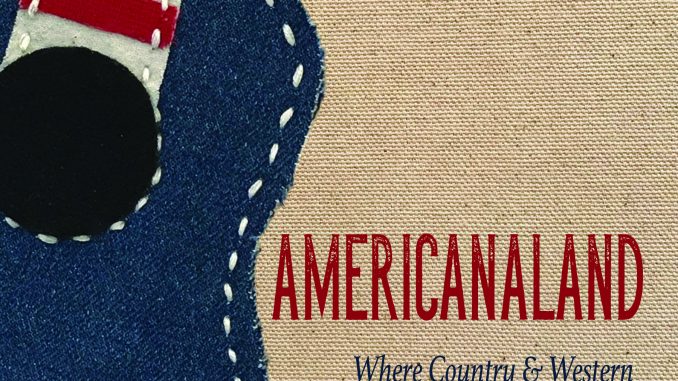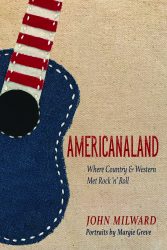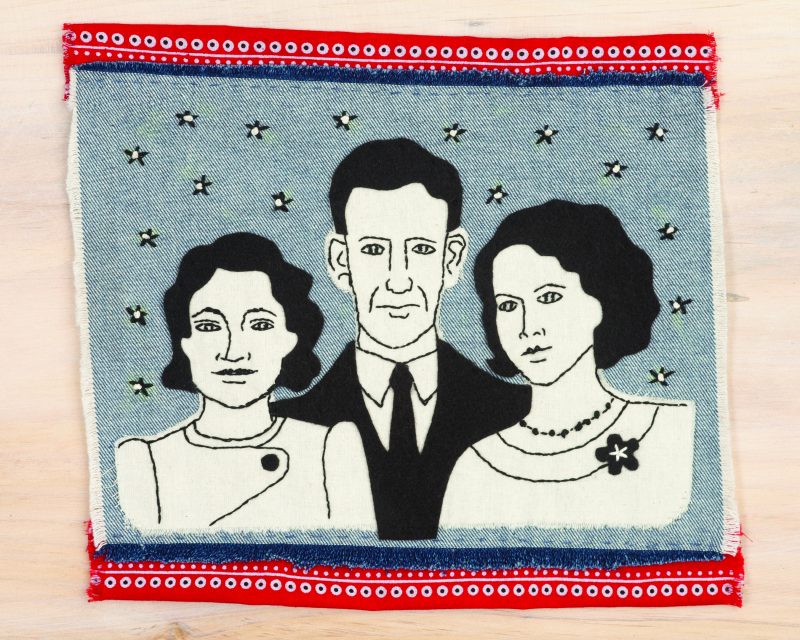
 If, like many of us, you have struggled to explain your love of Americana music to lesser mortals or, more likely, faced the frequent question, “But what, exactly, is Americana” then you will be relieved to know that help is now at hand. If you can afford it, just buy a big box full of this excellent new book and hand one out every time someone asks that question – or just buy one copy and read it from cover to cover – you’ll be lecturing on the subject in no time!
If, like many of us, you have struggled to explain your love of Americana music to lesser mortals or, more likely, faced the frequent question, “But what, exactly, is Americana” then you will be relieved to know that help is now at hand. If you can afford it, just buy a big box full of this excellent new book and hand one out every time someone asks that question – or just buy one copy and read it from cover to cover – you’ll be lecturing on the subject in no time!
This is an excellent book and a great read and I predict that many of you will be putting it on the Christmas wants list, because it really taps into the spirit of Americana and presents it to the reader in a very easily digested form.
What makes this book so clever is that author John Milward sets out to join the dots that create Americana music. The first sentence of the Introduction to the book says “Americana is a genre that presumes to include country & western, rock ‘n’ roll, folk, blues soul and bluegrass (among other things). Americana is hard to define, but easier to recognise.” Which is something I think we can all identify with. We know exactly what we mean by Americana but conveying that to others is a more difficult business. What Milward has done with this book, through a series of entertaining anecdotes and some very pertinent historical facts, has been to lay a trail that the reader can easily follow, that explains in a simple but intelligent way, what Americana is and how the different strands of the genre relate to each other.
Starting with the early recordings of the Carter Family and Ralph Peer’s attempts to catalogue regional music in Tennessee, something that leads to the discovery of both the Carters and Jimmie Rodgers, the author links those early recordings to the “Race Records” (as they were known at the time) that came out of similar early attempts to catalogue blues songs and discovered the likes of Sleepy John Estes and, later, Son House and Robert Johnson. It’s the early attempts to record “Hillbilly Music”, such as the Carters and “Race Music”, such as Estes, that form the first strands that then begin to weave together and pull in other, smaller strands as the roots music of the United States starts to build to what will become known as Americana. It’s almost akin to knitting an incredibly complex Fair isle sweater!

This book becomes increasingly fascinating as it progresses, with Milward pulling more and more individual strands into this complex pattern. The way he does this is by linking stories of individuals and their music and how that leads to other stories and other artists drifting into the same sphere and adding influence and/or taking influence away with them. Here’s an example of how Milward ties characters in, from the chapter, ‘Troubadours’ – “Dylan had worked with Wexler when he sat in on sessions for ‘Doug Sahm and Band’, which included the Dylan song ‘Wallflower’. Sahm, who at the age of eleven witnessed the very last show by Hank Williams, was as Americana as a musician could be. He grew up in Texas playing country, blues, R&B, and almost anything that crossed the border from Mexico. In 1964 he responded to the British Invasion by forming the Sir Douglas Quintet and recording such effervescent hits as ‘She’s About a Mover’ and ‘Mendocino’. Sahm was the sort of rootsy musician who appealed to Wexler. So was Willie Nelson, whom Wexler met in 1972 at the Nashville home of songwriter Harlan Howard.” In one paragraph Milward manages to take us from Bob Dylan to Willie Nelson via a string of major names in the music business and showing the links between them. He does this throughout the book. Here’s another example from the chapter ‘Punks, God and Urbane Cowboys’ – (Nanci) “Griffith met Jim Rooney at a barbeque and believed that he was the producer to take her career to the next level. When she arrived in Nashville to record she brought (Lyle) Lovett along to add background vocals. Rooney’s path to Nashville was filled with bohemian connections. As a student at Amhurst College in the late 1950s, he met banjoist Bill Keith, and they began playing as a duo; one of their first gigs was opening for Joan Baez at Dartmouth College.” It’s the way Milward manages to weave these individuals and their stories into his narrative that creates the structure of this book but it’s his ability to then tie those stories to other stories that builds a solid picture of the development of Americana music and it is a fascinatingly rich story at that. This book starts with scratchy audio recordings from the pioneers of American music and ends with full-on Netflix productions that celebrate Dolly Parton songs. It’s an indication of how far the genre has come and how the strands that make up Americana have gone from backwoods origins to music celebrated around the globe but still manage to retain much of their roots in community and the stories that people tell.
John Milward has been writing about popular music for over forty years, in publications like Rolling Stone, The New York Times and the Chicago Daily News. It’s that background that has enabled him to so thoroughly chart the evolution of Americana music in this book and it is a real pleasure to read. It’s also helped along the way by some fine prints of hand-embroidered portraits of some of the key players in this saga, by American artist Margie Greve. Like Milward’s prose, Margie Greve’s artworks capture the spirit of Americana as much as the music itself, and her illustrations are as finely judged as Milward’s artist anecdotes, always enhancing the narrative without drawing away from the whole.
 We haven’t reviewed any books from the University of Illinois Press before but, if this book is a typical example of the work they’re currently publishing, we’ve been missing out, because the thought that has gone into preparing this book for publication is apparent right from the cover itself. This book will be part of their Music in American Life series and we look forward to hearing more about that series in the future. For now, suffice to say that you won’t read a better book on the origins of Americana music this year and I’d be willing to bet it will be quite some time before there’s anything comparable to it. “Americanaland” is the book that many of us have been waiting for and Milward has timed his publishing perfectly to tap into the zeitgeist as this great music continues to make inroads around the world.
We haven’t reviewed any books from the University of Illinois Press before but, if this book is a typical example of the work they’re currently publishing, we’ve been missing out, because the thought that has gone into preparing this book for publication is apparent right from the cover itself. This book will be part of their Music in American Life series and we look forward to hearing more about that series in the future. For now, suffice to say that you won’t read a better book on the origins of Americana music this year and I’d be willing to bet it will be quite some time before there’s anything comparable to it. “Americanaland” is the book that many of us have been waiting for and Milward has timed his publishing perfectly to tap into the zeitgeist as this great music continues to make inroads around the world.
John Milward’s “Americanaland: Where Country & Western Met Rock’n’Roll” is published by the University Of Illinois Press on August 3rd 2021. The book can be obtained in the UK via Combined Academic Publishing – http://www.combinedacademic.co.uk/9780252043918/americanaland/



Very enticing review. This is definitely going on my birthday wishlist!
Mr foranyfavour is spot on – you’ve made it sound truly irresistible
Can you please review Allen Lowe’s Turn Me Loose White Man: Appropriating Culture or How To Listen To American Music 1900-1960 next?!
We review books much the way we do albums, with new books being submitted by the publishers looking for reviews but I do occasionally go after specific books if I think they’re likely to be of interest to our audience. Allen Lowe’s ‘Turn Me Loose White Man’ looks fascinating but it’s a big project and it would need some thought on how we tackle it as a review item. I’ll give that some thought and I’ll put it on my list of books to pursue. Rick Bayles, Books Editor.
Just read the book on the strength of this review that pointed me in the right direction. Great book. Thanks Rick
Thanks for the kind words Michael, glad you enjoyed the book.